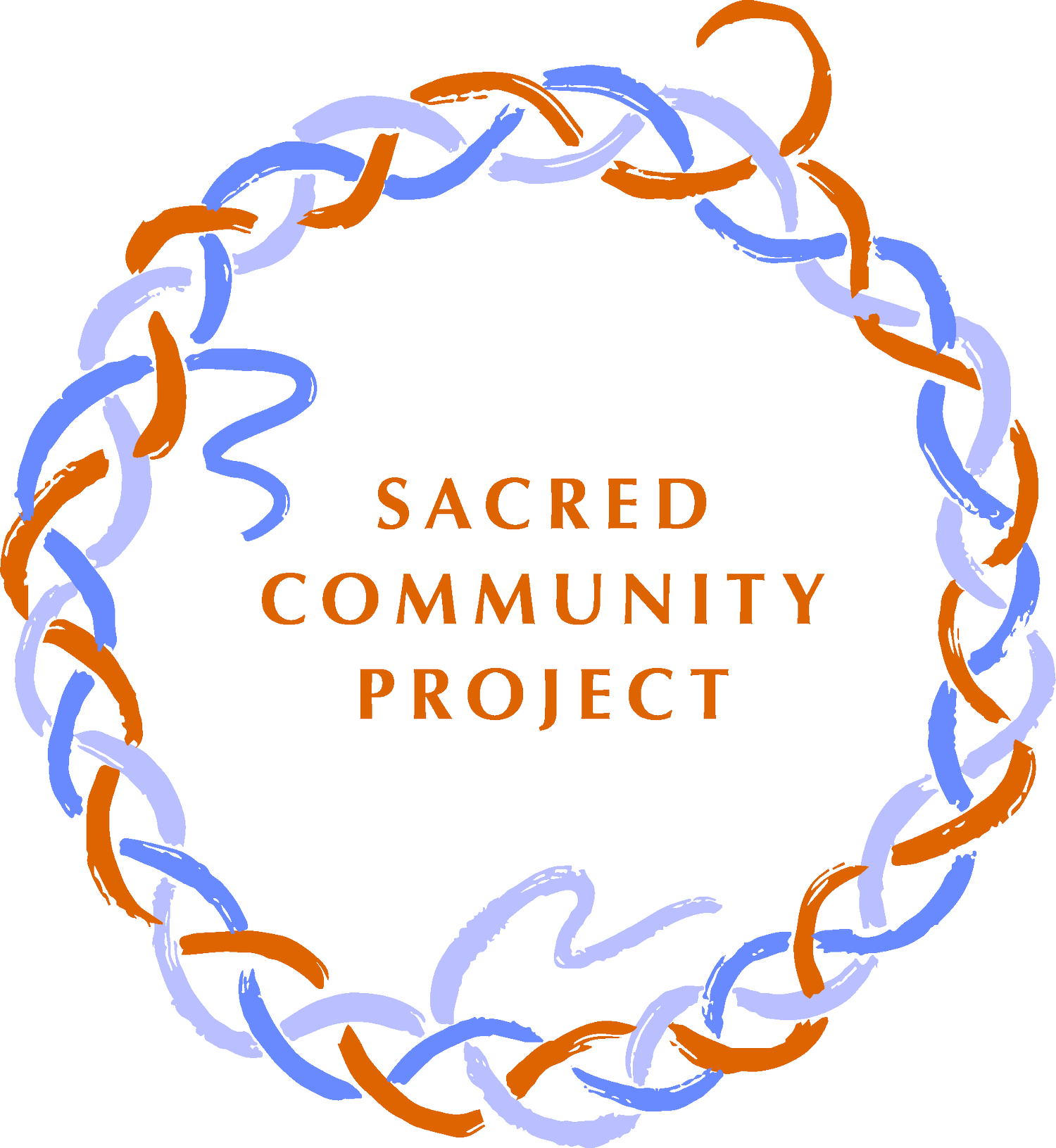Death, Grief, and the Eternal Soul
This video and transcript is from the event, Remembering Ram Dass, put on by the Emerge in association with Sacred Community Project. To watch the full event, click this link: https://www.emerge.ooo/video-gallery…
Today’s topic is on Death, Grief, and the Eternal Soul, and since this is the second anniversary of Ram Dass’s death, I thought I would speak about this using the lens of my own relationship with his death, making this as personal to me as possible. In this way, the hope is that it can be become personal for everyone.
Because death touches us all. Everyone and everything we love, all of our friends, all of our family, and we ourselves, will die. Death and grief are a part of life.
In the Mahābhārat, when king Yudhiṣṭhira was asked, “What is the most wondrous thing?” he replies, “That though we see death all around us, still we believe, ‘I shall not die.'”
I don’t think we are in need of any more theoretical teachings on death. I believe we are looking for permission to allow the reality of death to soak through our marrow. For death to become real- not as a future idea, but as a present reality.
There is a quote from Ramana Maharshi that Ram Dass used to recite. As Ramana Maharshi was dying, his devotees pleaded to him, “don’t die!”
He responded, “where can I go?”
This calls to mind the Kaṭhopaniṣad, which contains some of the most profound teachings on death n the entire planet.
The seer (Atman, Self) is not born, nor does he die,
He does not originate from anybody, nor does he become anybody,
Eternal, ancient one, he remains eternal,
he is not killed, even though the body is killed.If the killer thinks that he kills,
if the killed thinks that he is killed,
they do not understand;
for this one does not kill, nor is that one killed.The Self (Atman), smaller than small, greater than great,
is hidden in the heart of each creature,
Free from avarice, free from grief, peaceful and content,
he sees the supreme glory of Atman.
I still remember vividly this one time I heard someone ask Ram Dass a question. They said, “I have been contemplating the difference between loss and change. It seems to me that everything is always changing, so what makes something a loss?”
Normally when a question was asked of him, there was this long pause, and if you were receptive to it, you could often feel this bubbling of wisdom arising from that spaciousness. It’s as if the silence revealed the answer first so his words could merely validate it after. It was incredible.
In this moment, though, it was in reverse. He said one word, razor sharp, and he said it before she even finished her sentence, before she finished her last word, he said, “attachment.”
Rather than there being a silence first, that one word left a searing wake of silence. You could just feel the profundity of the moment.
The difference between loss and change is attachment.
But, we have to remember that attachment is not a mistake. It is not innately bad, and it is not wrong. It’s human. It’s a part of what it means to be human.
As Ram Dass’s guru, Neem karoli Baba, once said, “This world is all attachment. Yet you get worried because you are attached.”
Or, as Ram Dass wrote in his seminal book, Be Here Now, “Desire is the creator. Desire is the destroyer. Desire is the universe.”
So attachment, desire… it’s infused in everything.
Now, it’s true, the other part of that quote is, “desirelessness is mokṣa [liberation].”
And Neem Karoli Baba has also said that “attachment is the strongest block to realization.” But, it is not a mistake that we are here, and it is not a mistake that we are attached.
One time, I remember sitting with Ram Dass on the back porch of his house. We sat there, until Ram Dass broke the silence to say, “See this? Look how beautiful it is.” He then took his hand and caressed the horizon, painting the trees and clouds with the brushstroke of his fingers. He as referring to all of it.
Ram Dass taught, in line with the Sanātana Dharma and all of the world’s great wisdom teachings, that God is the entire animate and inanimate universe. That means that God is here, in this moment, with all of our attachments.
See how beautiful it is?
And attachment is not something that we can just rip away. It’s something that falls away through practice and through Grace.
There are countless people throughout the world that feel closer to Ram Dass now even more than when he was alive. This is true, and I am one of those people. I actually feel closer to him now than when I lived with him. And, I have spoken to people who live across the globe that never met him and who feel the same. It’s as if the death of his body created a permission slip that allowed the veils of the heart to lift, and then we could all form as intimate a relationship with him as our hearts desire.
But here’s the thing: the loss is real too.
For many of the people that had the closest relationships with him, where their daily lives were intimately intertwined, yes, they feel the continued connection, but they also feel the loss. And yes, it’s attachment, but attachment is normal, okay, and human. It’s not something that can be pushed away. And some forms of attachment are manifestations of love. This means that the loss and the grief that go with it are manifestations of love. The pain we feel in the loved one’s absence is a testament to love.
It brings to mind Nārada. After his mother died by a snake bite, he lived as a sadhu and dedicated himself to God. Śrī Hari [God] was then revealed within Nārada’s heart, and he had a moment of experiencing full union. And God told him that this darshan was being granted for a very special and specific purpose and that God was going to then hide from Nārada. Śrī Hari explained that Nārada was never going to see God again in that lifetime. And Śrī Hari told him that this was being done in order to inspire LONGING. That was the purpose.
Or what about the Gopis, those gurus of devotion- who danced with Krishna under the moonlight of the Vṛndāvan forest. Each Gopi’s gaze firmly fixed on Krishna and completely unaware that other Gopis were dancing with other Krishna’s just feet away. And then suddenly Krishna disappeared, and he Gopis completely lost their minds in LONGING. That longing intensified their love, which ultimately prepared them for Krishna’s full darshan.
Now, I know that these example are about a specific type of longing. They’re about a longing towards God. They’re not about human grief.
However, I am also reminded of another quote from Neem Karoli Baba. A couple asked him, as their Guru, “Will our love for each other interfere with our love for you?”
He replied, “If love is pure it interferes with nothing.”
The pain we feel in the loved one’s absence is a testament to love.
Grief is not just an emotion. It rocks our entire body, mind, and sense of self. Grief can be a massive, earth shattering CHANGE that erupts through our being. So, practicing detachment in grief means ALLOWING that change. It means allowing grief. Allowing our hearts to break. It also means honoring where we are at, honoring our human incarnation, which means honoring our resistance to the grief also.
It is sometimes said that we engage in different tasks of mourning in our grief. One of those tasks is finding an enduring connection to the person who has died. When we look at their pictures, think on old memories, or say their name, that love we feel for them is experienced in this present moment.
As Ramana Maharshi said, “Where can I go?”
Another one of those tasks is to accept the reality of death and to feel the pain of loss.
Yes, they are really dead. We can’t reach out and hold their hand. And it hurts. And that’s okay. It’s not a mistake.
That pain is also a perfect manifestation of the moment. That pain is Love’s message to us. That pain, like the entire animate and inanimate universe, is a manifestation of God. It’s awful, and it sucks, and it is Holy, Sacred and Divine.
Because if the difference between loss and change is attachment, and if life is always changing, then that means I want to allow ALL OF IT, including grief. I don’t want to push away grief. I want to honor it, as a holy part of life.
So, as I see it, our job is to hold both the realities of death and eternity. Because what I want is a heart so open it can dance between agony and bliss from one inhale to the next. Where God is found, not despite our humanity, but within the very depths of our fragile human hearts.

